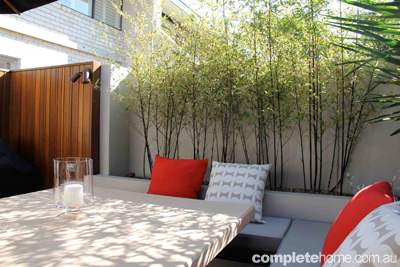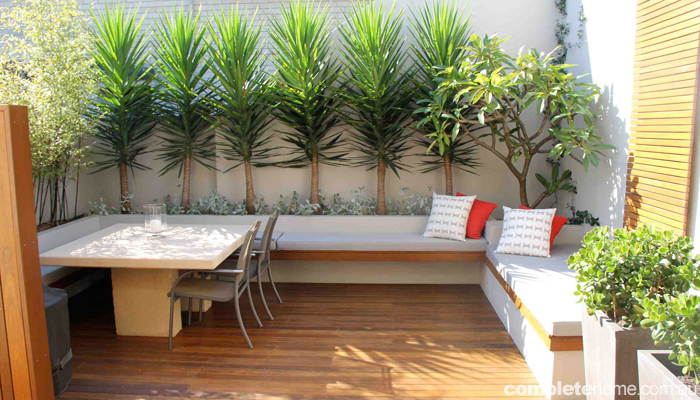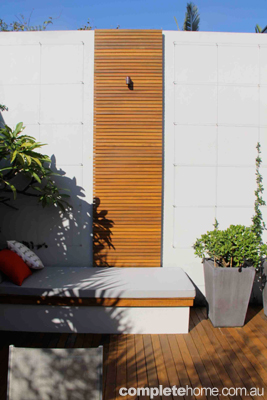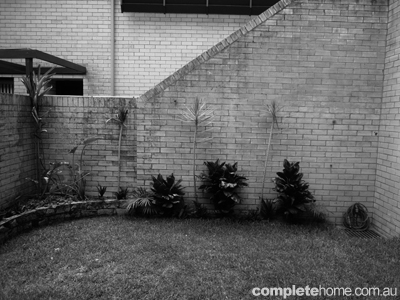Landscape architect Julian Brady shares the steps he took to guide a family through the process of turning their small courtyard into functional outdoor room.


Before
Well-designed gardens are more than good-looking — they are an important part of our lifestyle and a place where we cook, dine, bathe, relax, exercise and play.
Our gardens are important for sustaining our environment and containing a sanctuary for our own health and wellbeing. With garden size under pressure from urban consolidation, we need to think creatively about how to make the most of the space within our gardens. I recently completed a small courtyard project for a young couple. The courtyard space was their backyard and when I first saw the space it was a small lawn surrounded by high, dominating masonry walls.
The project commenced with a site meeting to meet the client and assess the site for constraints and opportunities. The first meeting is critical to ask the right questions and obtain a detailed design brief. In this particular case, my clients were a family of three with an infant child. The brief was to create a multi-purpose family-friendly outdoor room that connected the indoor space to the outdoors, making the overall area feel larger and interconnected to best suit their lifestyle and growing family. I was provided with a survey and then checked wall heights, views, site measurements, levels, drainage pits and locations of services. The briefing stage is the most important step in the process, as the designer uses your brief and information to creatively develop the design ideas to address your requirements.
Once I had collated all the site information and clearly understood my client’s requirements, the design phase commenced. This is the creative phase of the project where designers develop sketch ideas to respond to the brief. In this instance I designed an area for the barbecue, an alfresco sitting area, a daybed for relaxing, a feature wall, an outdoor shower to wash the sand off after visiting the local beach and a level deck surrounded by timber bench seats with built-in storage and weatherproof soft furnishings.
Plants such as yuccas and frangipanis were selected as features to soften the high masonry walls and provide textural form and highlights. The hardwood timber deck continued the look of the interior floorboards, which were a similar colour, emphasising the seamless connection between indoors and outdoors. The result is a stunning contemporary and functional space for the whole family to enjoy both day and night.
The concept design presentation included a scaled plan (sketch plan), section, elevation, planting and material schedules. With the approved concept design in place I completed relevant construction documentation, details and specification to enable the contractors to quote and build from.
Always consult with your local council to check if approval is required for any proposed works. In this case, no council approval was required; however, we had to obtain body corporate approval. The garden was built without delay so the family could enjoy their first summer in their new outdoor room.
Julian Brady is a registered landscape architect. www.sdstudios.com.au
By Julian Brady
From Renovate magazine Vol. 8 No. 2










